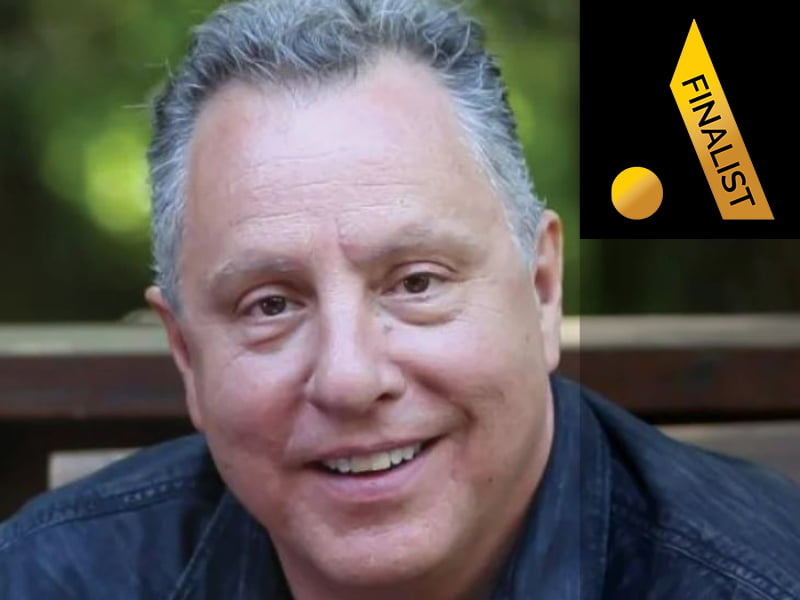Getting a new hardware business off the ground is notoriously the ‘boss level’ of startup ventures; the barriers to entry and the sheer capital outlay required to launch a new physical tech product have made it an historically tough proposition.
Long-time collaborators and Nuheara co-founders, Justin Miller and David Cannington, raised their concept for a wireless earbud that could also operate as a hearing assistance device inside the San Francisco-based tech incubator Wearable World Labs.
“We were surrounded by other companies all trying to bring themselves to market,” Mr Miller explains.

“As a hardware business it is very difficult to attract capital, and if you’re going to build a hardware business you need your money up front,” he says. “It’s not something you can bootstrap like a software company.”
A large portion of that cohort was – and still is – interested in the crowdfunding model, particularly when it comes to hardware.
So, after raising A$3.5 million through its initial public offering and becoming the first ever wearable tech to list on the ASX in March 2016, Nuheara then made the unusual decision to also launch a campaign on Indiegogo the following month.
“I think we were the first ASX-listed company to run a crowdfunding campaign,” Mr Miller said. “Which was really interesting because the crowdfunding campaign is live and so is the share price.”
He says the result was that ASX investors were able to see a real-world demand for the product as Indiegogo sales rapidly increased. Ultimately, the Indiegogo campaign raised more than $1 million in advance orders and was, at the time, one of the most successful crowdfunding campaigns on the platform.
The success of the campaign was a real vindication for Cannington and Miller who felt sure there was a broad market for a wearable that occupied the interstitial space between formal hearing aid and everyday earbud.
“Around 2005 I stepped back from my previous company [Empired] and I had seen some IP that was being developed at some Australian universities focused on industrial hearing,” Mr Miller explains.
That technology was incorporated into a headset product retailing under the brand name Sensear that is widely worn by people working in noisy industrial environments like mining, airports – even the US Marines. It filters out heavy machine noise whilst still allowing people to hold conversations.
“We would put one of our Sensear products on someone in one of these work environments and we would always get the same reaction,” said Mr Miller.
“Most of them have some form of industrial deafness and they’d say: ‘Wow! How do I get one of these for a restaurant?’”
Research suggests one in six Australians are currently living with some form of hearing loss, a number expected to rise to one in four by 2050. One study suggests that in well over a third of these cases the hearing loss is related to noise exposure.
“I started to think: I’ve been hearing this for a decade, is there a gap in the market? And there was a massive gap. Most people suffering some form of hearing loss have yet to do anything about it. And a lot of that’s to do with accessibility and affordability. The long and short of it is the average age of a hearing aid wearer is 72 yet we start losing our hearing at about 35.”
Aside from the price of hearing aids, which typically cost thousands of dollars, there is also the stigma associated with the wearing of hearing devices as well as the tendency to think “I’m not that bad yet”.
The Nuheara IQbuds²MAX retail for $399 and Mr Miller says that increased competition in the premium “true wireless” earbud space has really helped to normalise both this price-point and the wearing of in-ear devices in public spaces.
“Seven years ago, we were pioneers in the ‘hearable’ space but we were also pioneers in the wireless earbud space. We couldn’t have anticipated how ‘normal’ wireless earbuds have become.”
Nuheara automated the hearing test protocols that would usually be conducted in a clinic and customers are prompted to run a clinically validated audiogram through the device as part of a standard set up.
“We are the first product in the world to have a clinically validated hearing assessment embedded into the product.”
Up until this point Nuheara has refrained from calling itself a medical device due to the regulatory complexities involved but only this month began clinical trials.
“We’re well into the depths of proving ourselves as a clinical device now and that’s just a natural evolution of the business,” Miller says.
Nuheara products are also registered with the National Disability Insurance Scheme for use by customers with hearing sensitivities associated with autism spectrum disorder.
Nuheara is a finalist for the InnovationAus Awards 2021 in the Wildcard category.
Do you know more? Contact James Riley via Email.
